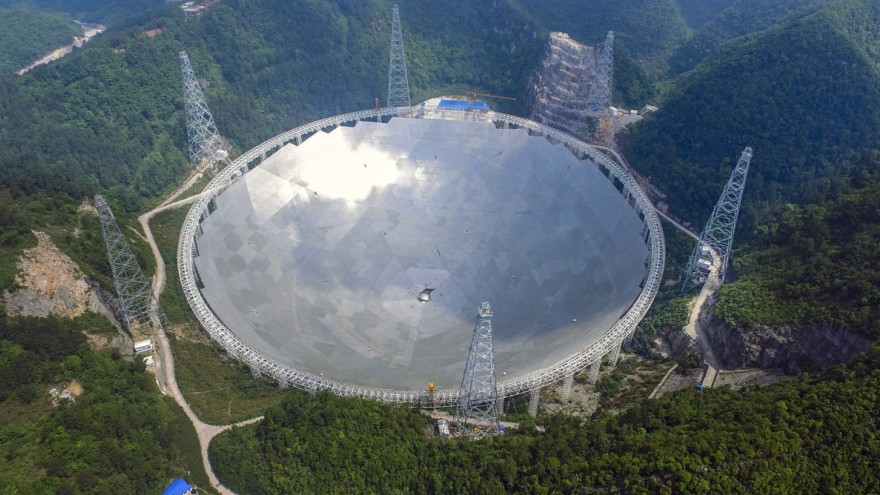2016 is proving to be a primary year for China’s space agency. Marking the launch of a host of new space tech projects, it seems the superpower of the East has great aspirations for space exploration and is gaining rapid scientific prestige.
In early August 2016, China launched its first ‘quantum’ satellite, a conglomerate of technology that Beijing hopes will be the first step in creating a network of “hack-proof” communication with potential benefits to the country’s commercial and military growth. The satellite takes its nickname, Micius, from a 5th century B.C. Chinese philosopher (often credited as a pioneer of optical science and experiments) and weighs around 600 kilogrammes.
The satellite was launched into the sky over the Gobi desert with help from a Long March-2D rocket. According to Xinhua, Beijing’s official press service, Micius is slated for a 2-year mission in orbit and will secure a channel for users to send messages that are transmitted faster than the speed of light. The satellite may become the first beacon of its kind in our solar system, enabling instant interplanetary correspondence that is impenetrable to hackers.
Nicolas Gisin, a quantum physics professor at the University of Geneva, explained the drive that developed this quantum transmission technology to the Wall Street Journal.
“There’s been a race to produce a quantum satellite, and it is very likely that China is going to win that race… It shows again China’s ability to commit to large and ambitious projects and to realise them,” he said.
Earlier in September, China launched its military-backed Tiangong-2 (which means “heavenly palace”) space station with improved laboratory infrastructure and enhanced accommodation for humans. This project forms part of China’s greater plans to send a manned mission to Mars in the coming years.
Tiangong-2 facilities include the POLAR programme, a multinational research collaboration between Chinese, Polish and Swiss science foundations. The space station will act as the platform for researchers from which to examine gamma ray bursts and it contains a cold atomic space clock (a device that measures time in huge scale, ticking once every 30 million years).
Incidentally, the space station that preceded Tiangong-2 is expected to fall back to Earth somewhere in late 2017. Chinese space agency officials confirmed that they have lost telemetric contact with Tiangong-1 and cannot manage its orbit any longer. This means it will eventually re-enter the atmosphere of Earth under no guidance.
Despite the implication of disaster and molten metal raining down to Earth, the chance of any harm is negligible and the risk is low. The great majority of the Tiangong-1 structure will burn up and vaporise due to friction as it hurtles through the air. Any enduring pieces of debris will likely fall into open ocean, far away from any land mass.
As a testament to China’s devotion to space exploration and pace with which the nation develops its projects, the design of the successor, Tiangong-3, has already been set in motion.
Back here on Earth, China recently unveiled it’s world-leading radio telescope which is officially the largest and most potent of its kind. The massive dish started operation on 25 September and is embedded in a natural basin among the green hills of Pingtang County in southwest China.
Measuring 500 meters in diameter, the structure surpasses the Arecibo Observatory in Puerto Rico (which helped astronomers discover the first pulsar binary system, leading to a Nobel Prize in 1993). The radio telescope is known as the Five-hundred-meter Aperture Spherical Telescope (or FAST, for short) and has been nicknamed by local communities as Tianyan, the “eye of heaven”.
FAST’s structure consists of 4,450 metal panels arranged in a colossal elliptical sink. Its size allows researchers to capture the faintest of gravitational waves, detecting different kinds of signals that issue from neighbouring stars and galaxies. Part of the Chinese telescope’s function is to keep an ear open for distant extraterrestrial life.
Qian Lei, an associate investigator at the Chinese Academy of Sciences, spoke to CCTV in regard to the purpose of the Five-hundred-meter Aperture Spherical Telescope.
"The ultimate goal of FAST is to discover the laws of the development of the universe… In theory, if there is civilisation in outer space, the radio signal it sends will be similar to the signal we can receive when a pulsar is approaching us," he stated.
Installation of the FAST dish started in 2011 and was completed in July 2016. Its researchers have already reported the reception of signals that were emitted from a pulsar (rotating neutron star) approximately 1,351 light years away from Earth during a recent trial.










